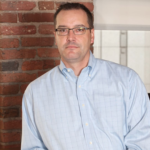Disruption the Catalyst for Change

COVID-19 caused a massive disruption in our daily lives and businesses. Some are calling it ‘The Big Reset’. Companies reduced to skeleton staff or moved largely to remote work. How we live and do business has changed along with our priorities. The pandemic – whether we like it or not – is a catalyst for change, and this time can and should be used to transform and align your human assets.
Think, a rapidly growing management consulting firm that works closely with middle-market companies and their executives, is seeing its strategic hiring business flourish even in the midst of pandemic. Bryan Wolbert, Executive Vice President and Chief Operating Officer of the Baltimore-based firm answers a few questions that have been on the minds of hiring managers across the nation.
Q: The pandemic caused a disruption to businesses that was unavoidable, disruption is needed to spark change, do you think HR teams will take this opportunity to strategically align their human assets?
This is an excellent time for HR Directors and hiring managers to look at their current workforce plan to assess current operational state with future needs as recovery takes place. Are the overarching business objectives clear? Have these objectives been communicated to staff so they can align their goals? Do your current employees have the skill sets needed to grow into future roles of the organization? These are all things that should be investigated and considered to optimize your talent pool.
Think started strategic hiring to find the right high-caliber employees for its own consulting teams. Now through the strategic hiring division, 75% of our candidate recommendations are hired. We attribute this success to a rigorous vetting process making intelligent hires that strategically align with the overall business objectives of the open role.
Q: What are the benefits of strategically aligning your staff with business future growth?
Many times when hiring, especially when using an outside agency, a challenge is that hiring is short-sighted and doesn’t take into account both what is needed currently in a role and where we think that role will go in the next 1, 2, 5 years. To strategically align a hire with this type of forethought and planning, it’s important to work with experts who understand the skills and aptitude to not only handle the current need but to map a clear path to the more strategic goal for a role.
Q: Even before the pandemic, many workplaces were considering flexible work schedules. What do businesses need to consider when transitioning to remote work?
While remote work is the norm in many industries – it’s new for some companies. It is possible with today’s technology for workers to be just as productive remotely as when they are in the office. Some key things to think about when shifting the workforce to remote are making sure you have the technology in place that will enable your team to be effective but also enable folks to continue to be engaged with each other. One example of this is reliable video conferencing software. Not only is face to face important when doing business – it’s important to make sure our employees don’t lose the human element they love about the workplace – don’t be afraid to hold video happy hours – we’ve done so very successfully with both clients and employees.
Security is also a key concern when shifting to a full remote workforce. Do you have the right protections in place when your entire staff is using home networks that you don’t control or really know anything about? The right, secure VPN software will help with this. Bottom line – a remote workforce doesn’t have to be scary – but if you’ve never done it, leverage the experience of those who have, and it may even boost productivity!
Q: With constrained budgets but pressure to return business to pre-pandemic productivity, are there benefits for businesses to consider contractual staff vs. permanent?
No two businesses are the same therefore what works well for one may not work for the other during this recovery period. However, businesses hit hardest may consider contractual staff to offload the benefit burden, increase flexibility, and tap into a highly qualified talent pool that can be brought on quickly often with less red tape. Many organizations are currently operating under a hiring freeze, this often pertains to permanent hires and not contractual or temporary employees. For organizations needing resources without the ability to permanently hire, contractual hiring may be the loophole HR Directors can use to get over the hump.
The bottom line here is that you’ve been disrupted by COVID and your staff doesn’t look like it looked 60 days ago – you may not be able to rebound on your own and you cannot trust that to the traditional, commoditized staffing industry. Think has made its name managing the toughest projects and organizational challenges for clients of all sizes across many industries. When it’s time to figure out your strategy for hiring in the wake of COVID it is this level of expertise and experience that will assure defined role(s) and candidates that meet your need. Learn more about us at www.thinkconsulting.com.

Bryan Wolbert
Executive Vice President & Chief Operating Officer
Head of the Think Strategic Hiring Group
bwolbert@thinksi.com
410.624.7216
Originally published in the June 2020 Edition of HR Professionals Magazine:
https://hrprofessionalsmagazine.com/2020/05/26/disruption-the-catalyst-for-change/
